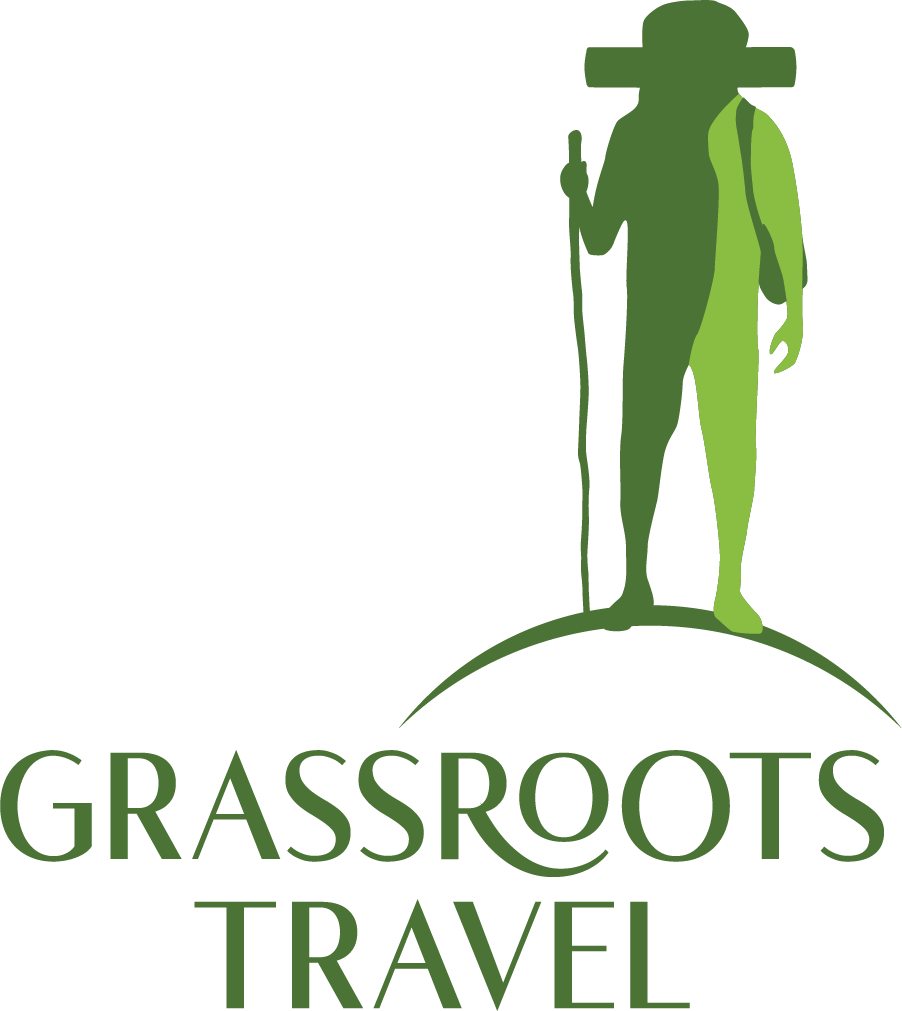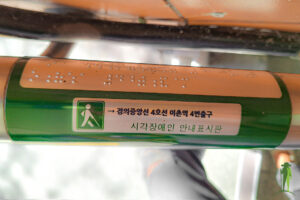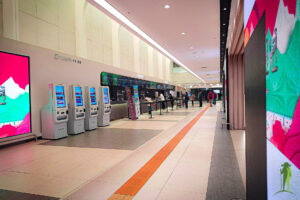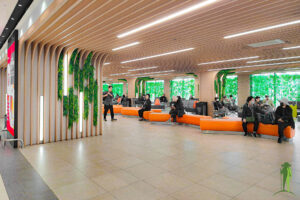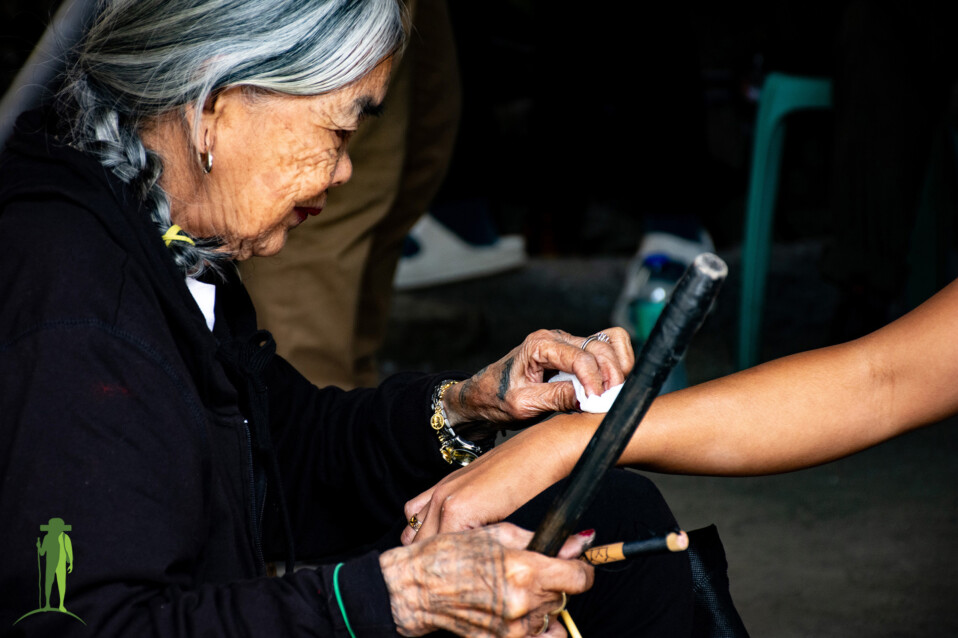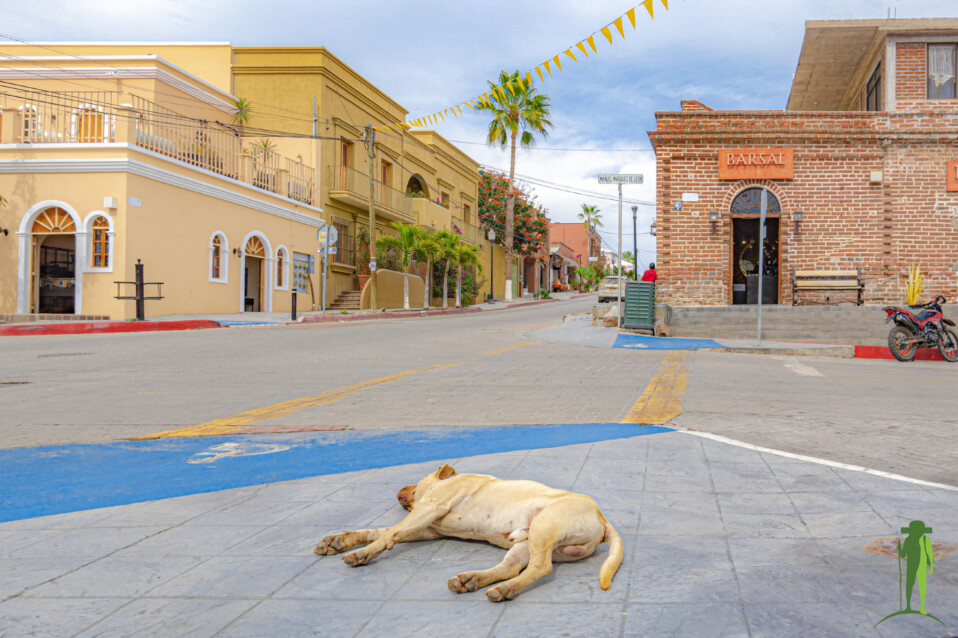Seoul Impressions:
A Brief Glimpse of the South Korean Capital
December 20, 2024
by Tanya
17-minute read
While we have spent many long layovers at Incheon International Airport in the past, this was our first time to go beyond the transit terminal. The entry process at Immigrations was smooth and efficient. After we had our faces photographed and our passports stamped, we proceeded to collect our luggage. We moved along with the line at Customs, waiting for our turn to have our bags scanned. As we were picking up our suitcases at the other end of the x-ray machine, an officer approached. He then politely asked me, “Please bring your bag over to this side.”
Entering Seoul
My suitcase lay all alone on top of the low metal counter, awaiting its fate. They slid its zipper open, lifted the top, and homed in on Sten’s Finnish 2-piece knife set. Of course, it had to be something of his. I had put it in with my things for a more equal weight distribution of our luggage.
“You are not allowed to bring a knife this long into the country,” the officer explained to me. He then showed me a handbook with pictures of all the items that were considered illegal in Korea. There was a photo of a blade that was similar to the big knife of Sten’s traditional Sámi knife set.
“But the small knife is not a problem.” That was the first of many things to know about South Korea.
The staff instructed me on how to fill out the necessary paperwork and guided me on the next steps. They would return the big brother to us once we had officially exited the country. They told me to call the number on my copy of the form to make an appointment for the collection of the confiscated item on the day of our departure. Meanwhile, Sten looked on from a distance, clearly displeased with this development. He was not keen to come here in the first place, and then this happened.
He was favoring his problematic knee, which he had hurt again on our last week in Mongolia. It was an opportune moment to suggest that he waited downstairs while I stored some of our luggage upstairs. I also wanted to give him time to let off some steam and hopefully forget about the recent events. Ten minutes later, I rejoined him downstairs and led him outside to take our first step on Korean asphalt.
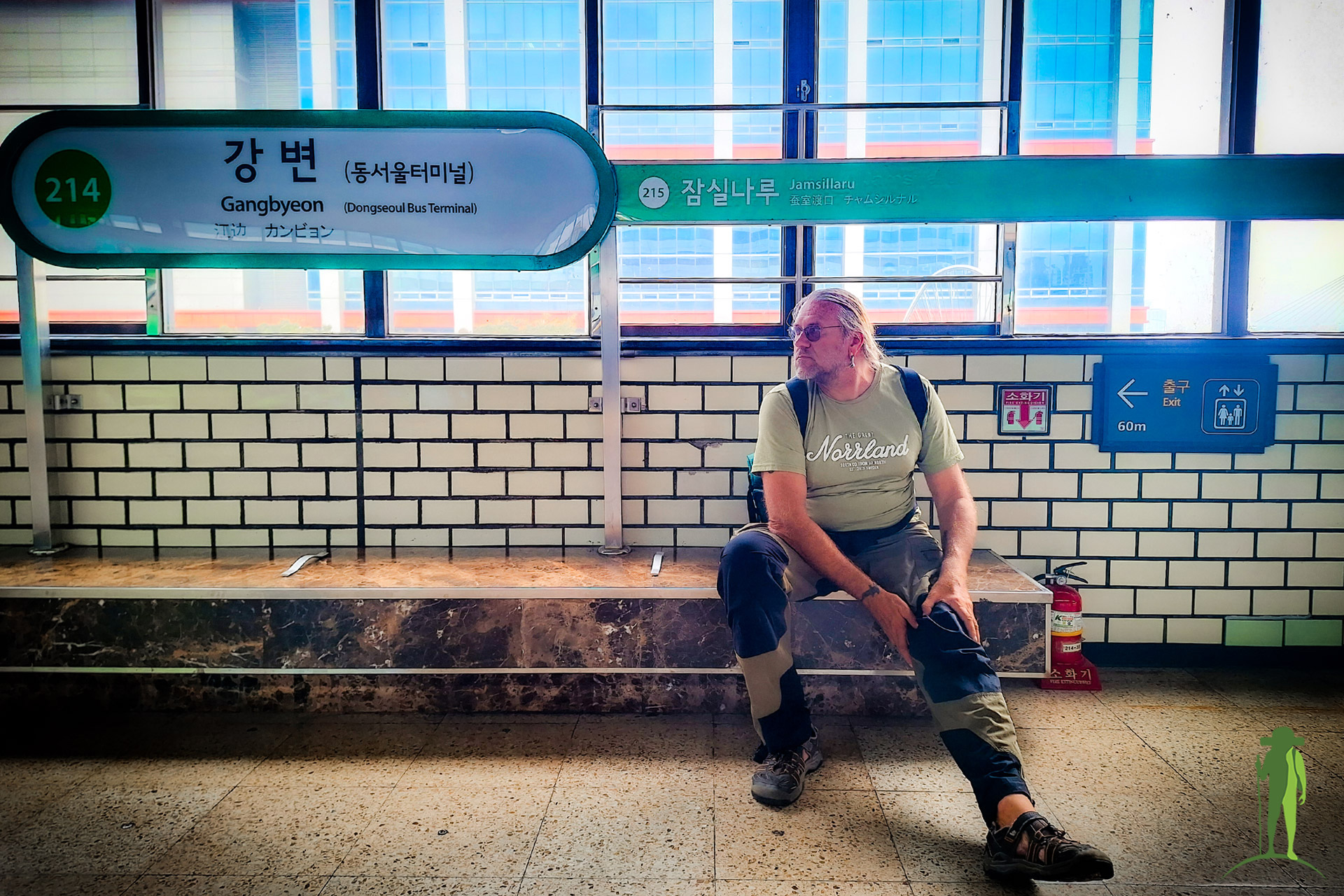
Cars and Economy
I looked out my window and watched the passing scenery as our taxi cruised along the highway. Having just spent months in a country overrun by Toyota Prius hybrid cars, I was curious what kind of vehicles we would encounter on the road. I was not surprised to see Hyundai and Kia as the dominant brands. Ioniq, a sedan manufactured by the former, was the hybrid car of choice. General Motors and other foreign brands whizzed past, but I didn’t spot a single Toyota during our 40-minute ride.
Japanese brands account for a small portion of the South Korean automobile market. They were effectively banned until 1999 because of South Korea’s trade deficit with Japan. Despite the lifting of the ban, South Korea continued to implement its infant-industry policy, which imposed a high tariff on foreign goods to protect and promote its domestic automobile manufacturers. Ongoing tensions between the two countries, including disputes over historical grievances and non-compliance with export agreements, also led to a boycott of Japanese products in South Korea in 2019.
In recent years, public opinion towards Japanese cars has started to shift. The younger generation are especially more open to purchasing Japanese brands, going so far as to say that they were not going to let history and past animosity hold them back from choosing the better product. Korean manufacturers are quite confident to compete in the global market nowadays and are also shipping their products overseas. In fact, the export-oriented policies of South Korea have greatly contributed to its success. Investing in research and development has ensured South Korea’s export competitiveness in technology and innovation, which fueled its remarkable economic rise over the past decades.
Don’t care about Housing?
Click here to skip to History and Politics
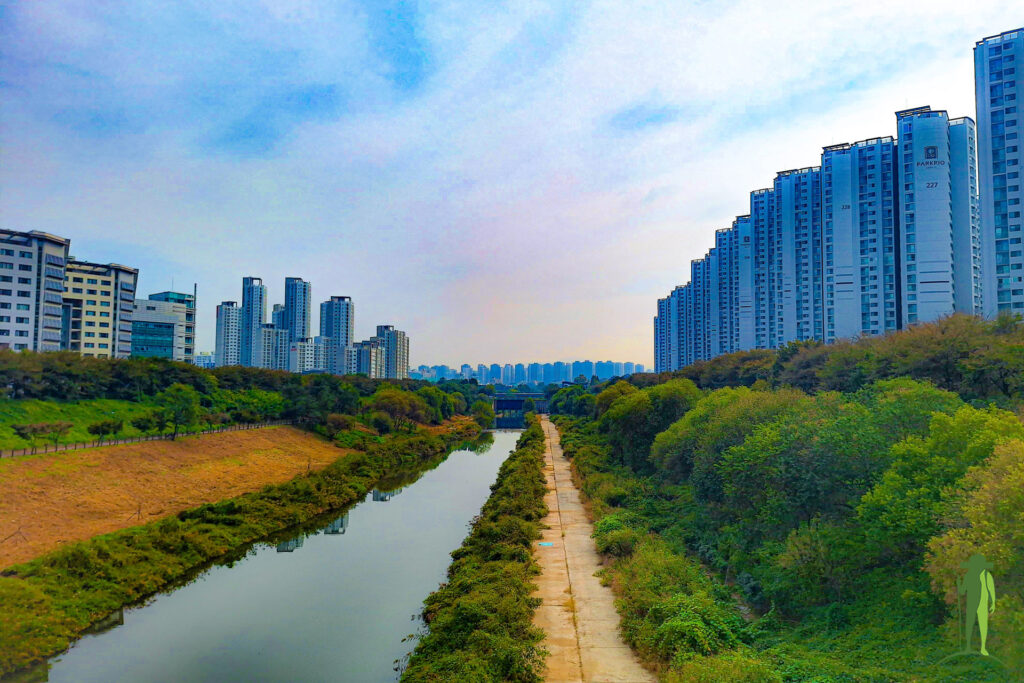
Left: High-rise apartment buildings with views of the Han River (not pictured)
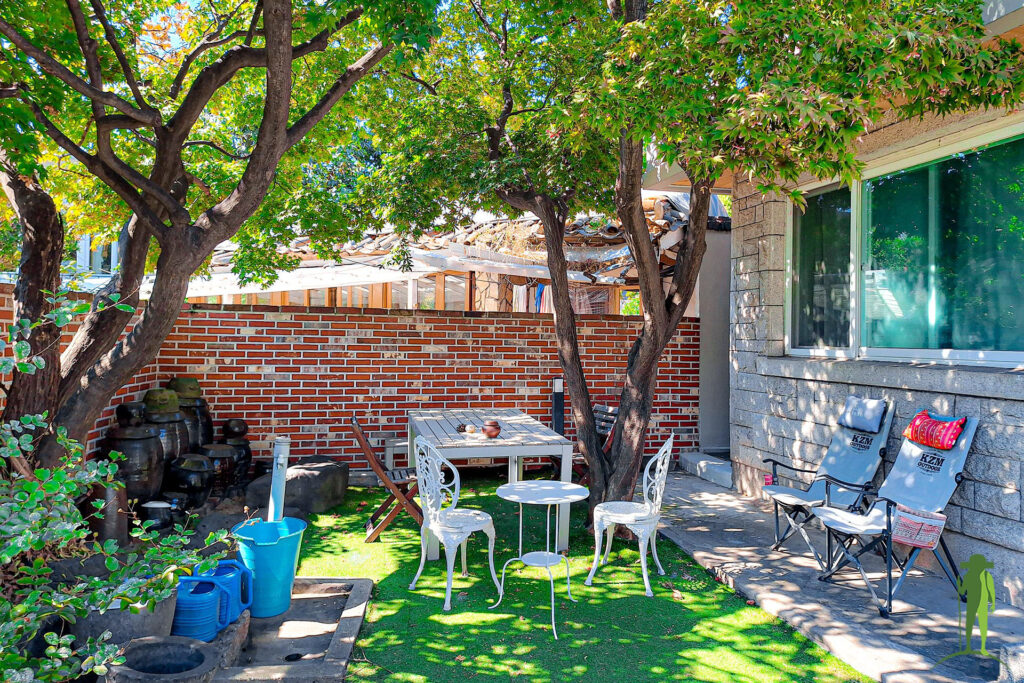
Right: Our private room in the share-house facing a small garden
Housing and Cost of Living
We hardly stay in big or chain hotels that are normally isolated from the local community and always look the same wherever you go. We chose a share-house over a guesthouse for our accommodations in Seoul mainly because we wanted to have a private room with en-suite bathroom. Guesthouses in South Korea are usually renovated family homes with shared facilities. They could be part of the main house or an extension on the same property. On the other hand, share-houses are constructed with people who are not necessarily related in mind.
Our room was a 14-square-meter space with a working desk, a bunk bed, and two rolled-up futon mattresses. The bathroom had a sink-and-shower combo like on some boats, except that it was much more spacious. The private room was advertised as good for 4 people… I would say it was perfect for us because Sten loved sleeping on the futon mattress. There was enough room for the two of us and our 4 pieces of luggage.
Single detached homes with a sprawling garden are hard to find (or afford) in major cities. Most people live in small apartments, and a one-room apartment can set you back anywhere from USD270 to USD900 a month, depending on the location. The housing cost and the amount of the security deposit are the main reasons why Seoul is often listed as one of the world’s most expensive cities. The average cost of living in Seoul for one person is around USD1,400, with around USD650 of it falling under the Rent & Utility category.
Don’t care about History?
Click here to skip to Technology

Gyeongbokgung (Gyeongbuk Palace), shown in all Korean period dramas featuring the Joseon dynasty, was constructed during the reign of King Taejo, the general who ended Goryeo’s 475 years of rule. Built in 1395, Gyeongbokgung served as the home of the royal family and the seat of government in the Joseon dynasty.
History and Politics
Since we didn’t know much about the country except for what I have seen in K-dramas, our first order of business was to visit the museum. It was a convenient 5-minute walk to the subway station from our share-house, plus an hour on the train to get to the National Museum of Korea. (The fare starts at KRW1,400, or ~USD1, for the shortest distance and a physical subway card costs KRW3,000.)
Unlike our other museum visits, we didn’t get a clear picture of Korea’s history from our time in the exhibit halls. We unknowingly did it in reverse order, though, which might have been one of the causes of our confusion.
Little Country, Big Dreams
Korea is a small country that went through several invasion attempts and successful occupations by its much bigger and more powerful next-door neighbors. The Korean Peninsula used to be comprised of multiple (70+) states before they merged into the Three Kingdoms. Goguryeo, a highly militaristic empire in East Asia, controlled the northern half of the peninsula. Silla ruled in the southeast, while the southwestern kingdom of Baekje was founded around modern-day Seoul. Silla eventually outsmarted and overpowered the other two kingdoms, but was later on replaced by the Goryeo dynasty.
Goryeo had to frequently defend against attacks by nomadic empires. The Mongols invaded several times from the 1230s until the 1270s, but never succeeded in conquering the kingdom. Goryeo sent its crown prince to Yuan to swear allegiance to the Mongols and prevent further fighting. Consequently, Kublai Khan married off one of his daughters to the Korean crown prince, the first of many such arrangements for the next 80 years.
Across the sea, Japan lay patiently in wait to come into the picture. In the late 1500’s, a Japanese samurai decided that he wanted to conquer China and India through the Korean peninsula. Joseon, a dynastic kingdom founded by a disenchanted general of the Goryeo empire who staged a coup, experienced great destruction despite defeating the Japanese.
When it wasn’t from the east, attacks originated closer to home. Less than 30 years after the Japanese invasions, the Manchus took advantage of Joseon’s war-weakened state and invaded in the mid-1600’s. Only when the Qing dynasty succeeded the Ming dynasty did Joseon get to experience almost two hundred years of peace again.
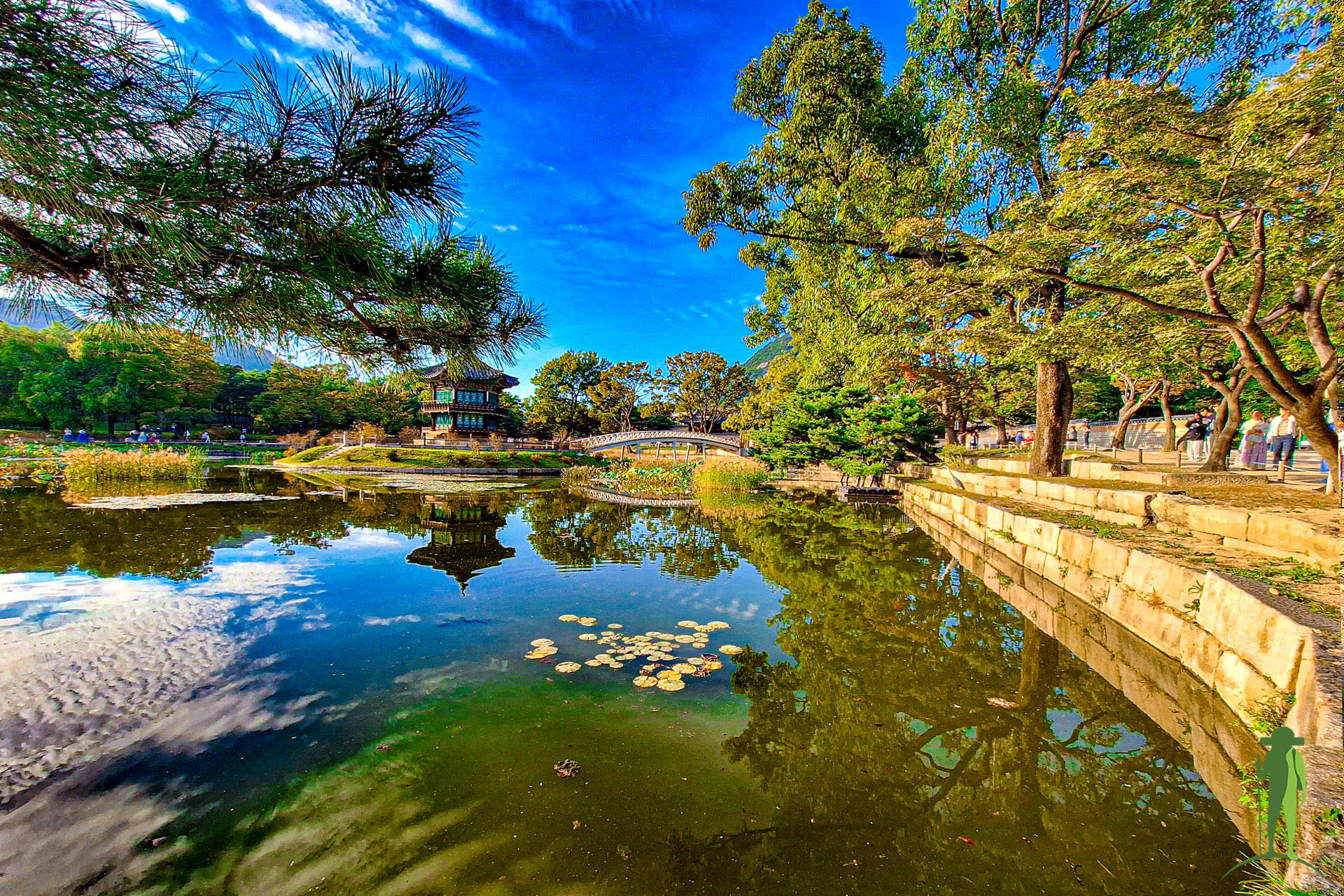
Modern History
Korea became a chess piece in the First Sino-Japanese and the Russo-Japanese Wars, with the country ultimately falling under Japanese rule. During World War II, over five million Koreans were conscripted for labor and over 100,000 children and adults served as “comfort women” for the Japanese military. After Japan had surrendered in 1945, two more years of geopolitical tension left the peninsula divided at the 38th parallel. In 1948, three years after the Inner German border was established on the other side of the world, Korea followed suit with its own two separate governments. North Korea aligned with the Eastern Bloc, while a Western-style regime was observed in the south.
Unresolved issues and ongoing tension prompted the 3-year Korean War, the first proxy war of the Cold War. Kim Il Sung in Pyongyang led North Korea, and Syngman Rhee took charge in Seoul, South Korea. Despite the armistice at the end of the fighting, the lack of a peace treaty did not ease the Korean conflict. Unlike Germany, reunification is still on Korea’s distant horizon.
Syngman Rhee became the first elected president of South Korea. Military dictator Park Chung Hee was the longest-serving president, holding the office for 18 years until his assassination in 1979. His daughter, Park Geun-hye, was the only female president and the first president to be impeached since democracy replaced her father’s dictatorship. As of 14th of December 2024, Han Duck-soo is acting president of South Korea following Yoon Suk Yeol’s removal from office. The latter is the second president to be impeached in the country’s history.
Don’t care about Technology?
Click here to skip to Safety
Technology and Efficiency
Since we had a late start, it was almost lunchtime when we arrived at the museum. We figured we should grab something to eat first. We queued up to place our order on a touch screen, which Sten was not too happy about. Once inside, we sat down at a vacant table and waited to claim our food at the assigned station. We noticed a sign advising patrons to leave outside beverages in the designated cupholders. When we finished our meal, we had to bus our tray and slide it into the one of the tray racks at the end of the hall.
In a technologically developed country that aims for efficiency, there is less human contact and more touch screens. Fortunately, South Korea is not yet a cashless society. You can still pay in cash when you top up your subway card or order your meal. Also, people with health conditions or impairments are not marginalized. Most subway stations in Seoul now have elevators and public restrooms with wheelchair access and handrails with signs in Braille. Many tourist attractions, especially those run by the government, offer discounts (and sometimes free entry) to people with disabilities.
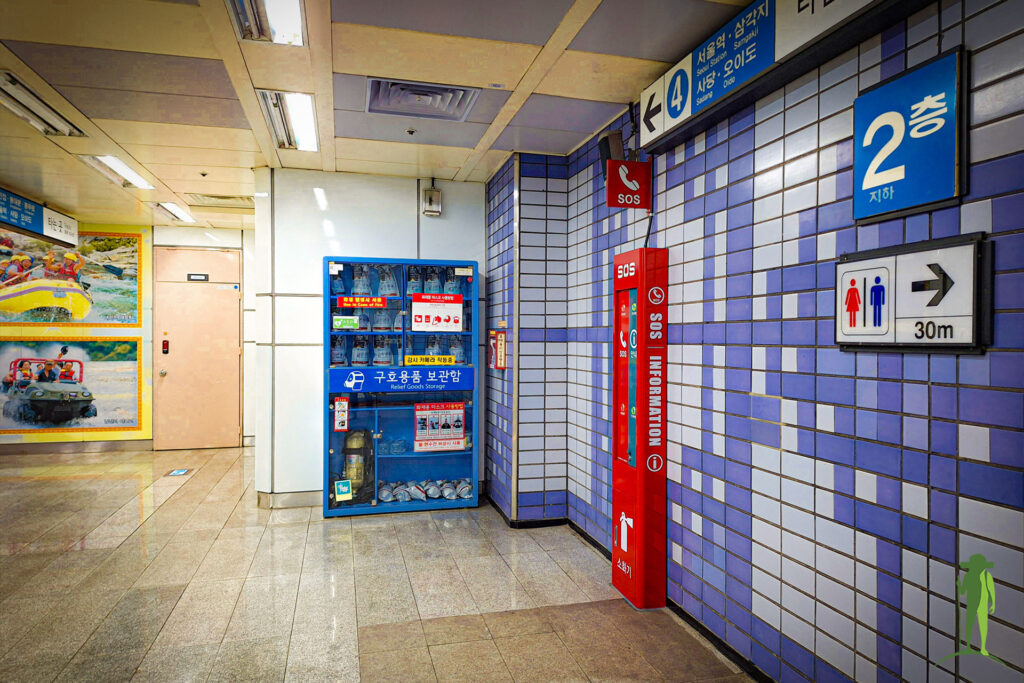

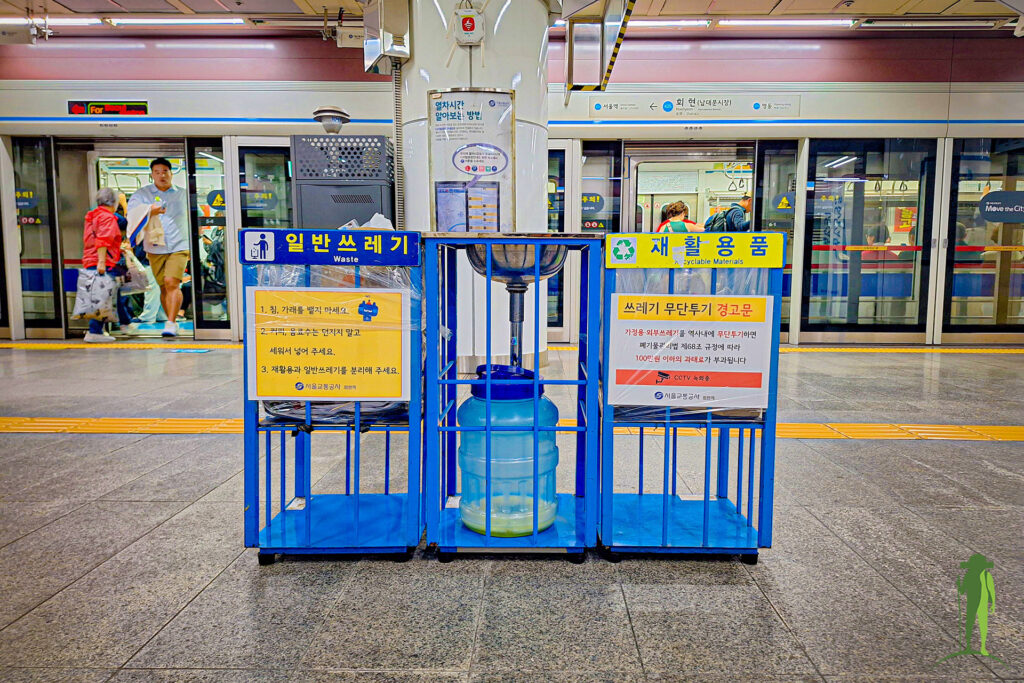
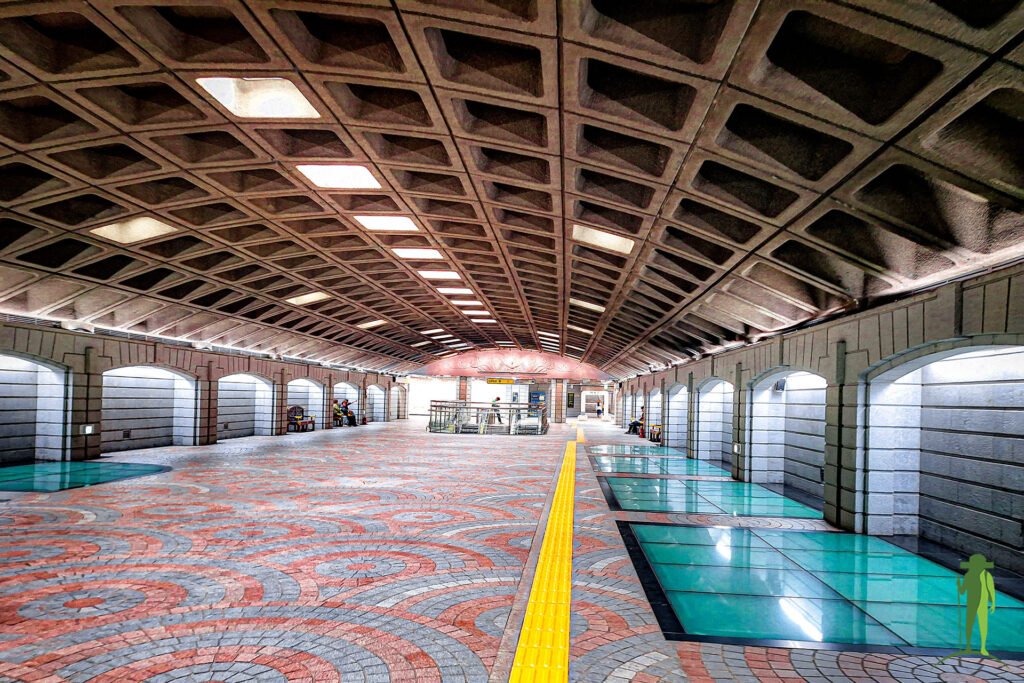
Safety and Waste Management
Back in the subway after our day at the museum, we looked around while we waited for our ride. We didn’t see any litter anywhere, and there were disposable bins even for liquid waste. Any way we turned, we spotted signs indicating where to get help. We saw an instructional video showing commuters how to claim their cellphone if they accidentally dropped it in the gap. On the platforms, we found glass shelves stocked with fire protection gear and relief goods every few hundred meters. We were happy to see that we might survive a disaster, even a zombie apocalypse.
South Korea’s waste management system calls for food, garbage, recyclables, and bulky items to be separated into color-coded bags. The policy is strict, and non-compliant citizens are fined up to around USD800. Garbage trucks refuse to pick up trash that don’t follow the guidelines, leaving the pile to gradually grow into a mountain. Also, it is illegal to send food waste to the landfill. Instead, Koreans need to place them in biodegradable plastic bags, which then get sent to a recycling facility that converts food waste into biogas, compost, or animal feed. Some people use the neighborhood composting machines to personally get rid of their organic waste for a small fee.
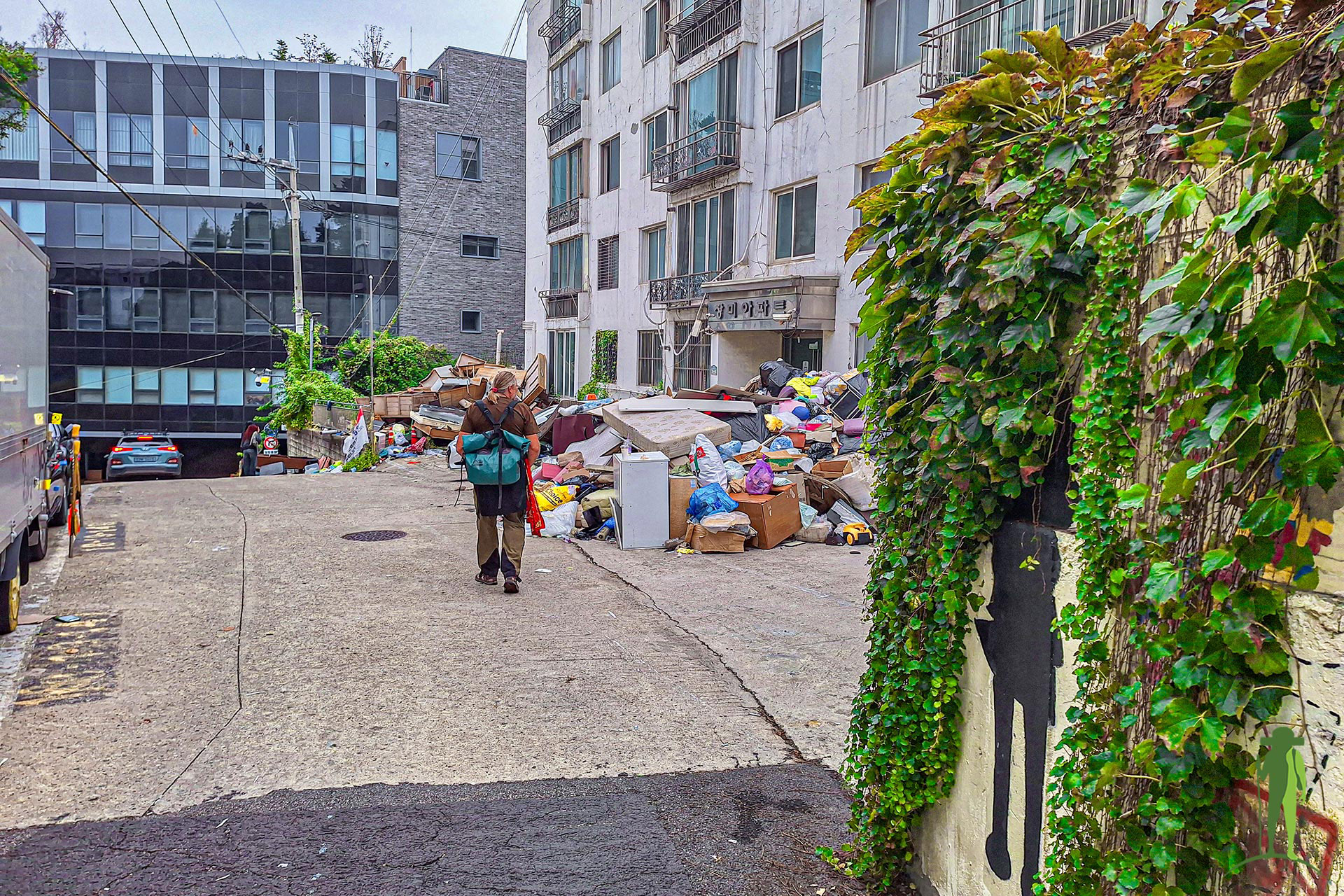
No Butts About It
Smoking is not permitted inside dining establishments with an area larger than 150 square meters as well as in outdoor public locations such as bus stops and city plazas. Violators may pay up to USD70 in fines. There are designated smoking areas around the city and at major transportation hubs. Unofficial smoking areas are in corners and alleyways, usually indicated by a pile of cigarette butts.
Our takeaway: You can leave your stubs around storm drain covers; just dispose of the rest of your trash properly. Cigarette butts are the litter that fell through the cracks.
Environment and Natural Resources
What we liked about Seoul is that it’s dotted with parks and recreational areas where people can take a walk during their free time to relax or stay healthy. There’s plenty of green space and one can enjoy nature downtown without having to go far away. I didn’t feel like I was in a concrete jungle like in Manila. We could still breathe despite being in the city.
Amidst this green, South Koreans are growing increasingly concerned about “fine dust,” dangerous pollutants believed to be carried by winds coming from China. Environmental research findings show that China is responsible for at least half of South Korea’s pollution issue. Then there is the domestic problem of South Korea’s own power plants, about 40% of which are currently generated from coal.
Seoul has all the amenities and conveniences of the modern world, with no apparent shortage of resources. However, expanding demands from a highly dense population have put a strain on its river basins. South Koreans are generally complacent about the need to reduce water consumption due to the country’s reasonably inexpensive water infrastructure. (Tap water is safe to drink.) Unfortunately, they travel overseas with this mindset and unconsciously leave the tap running in places like the Gobi Desert, an increasingly popular destination for South Korean tourists.
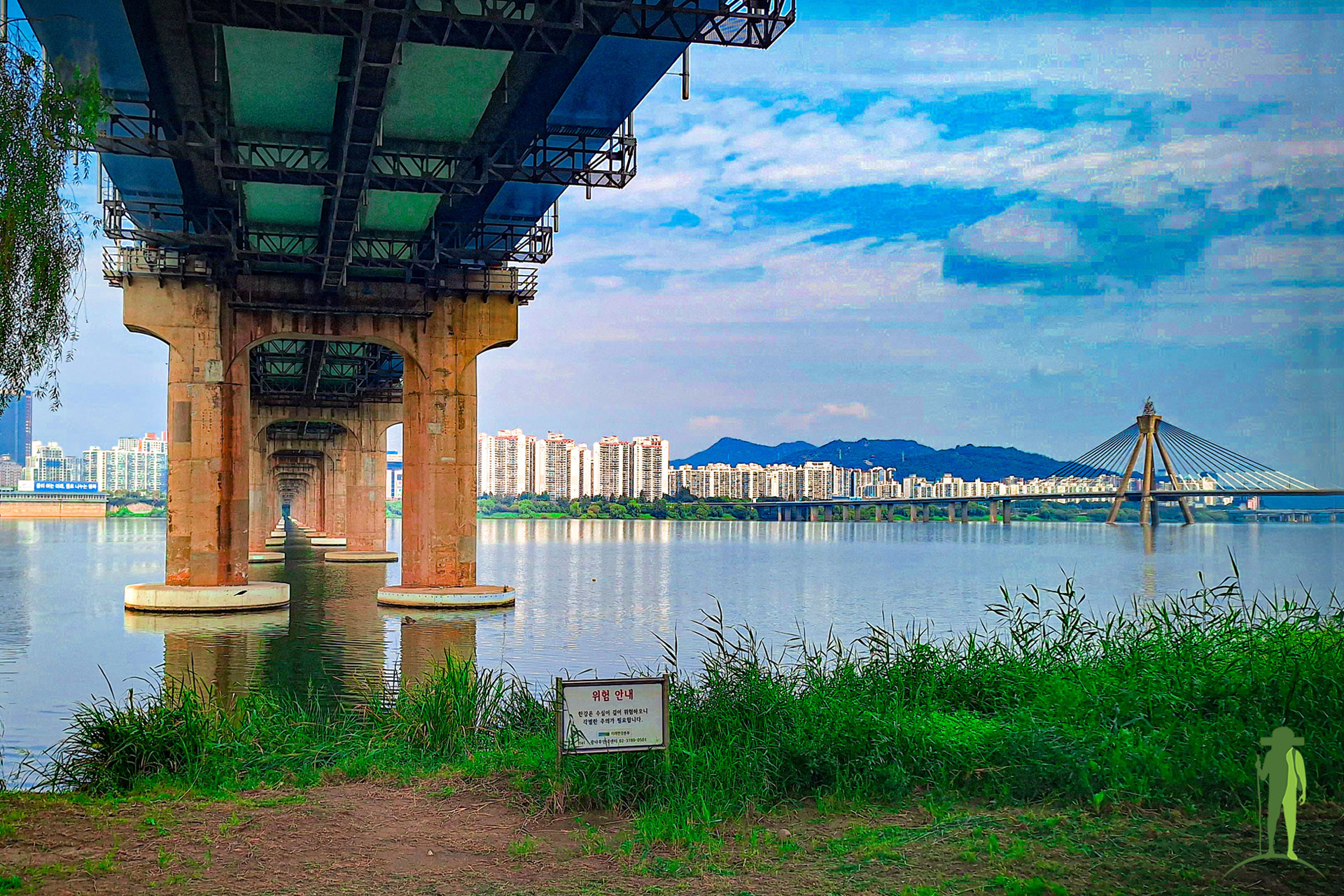
People and Culture
We found Koreans nice and friendly in general. The South Koreans in Seoul are used to seeing foreigners, so they paid no heed to us in the subway and other public places. Just as in any big city, don’t expect them to smile and say hello when you walk by each other on the street. We did exchange greetings with a few residents in our local neighborhood, though.
Curiosity drew them into conversation with us, especially while we were trying out Korean cuisine. South Koreans couldn’t seem to help themselves; they had to instruct us on how to eat their food. On more than one occasion, the staff sat with us and grilled our meat for us. That they were giving unsolicited help in Korean didn’t faze us. We had just spent more than two months in Mongolia prior to coming here.
Manners are very important in Korea, and how people address each other is complicated. While it would be rude for Koreans to disregard common courtesy, I think locals are more forgiving towards foreigners who don’t have a good command of the Korean language. I attended Chinese Catholic school for eight years, so it was nice to be back for a while in an environment where I bowed to an elder as a sign of respect.
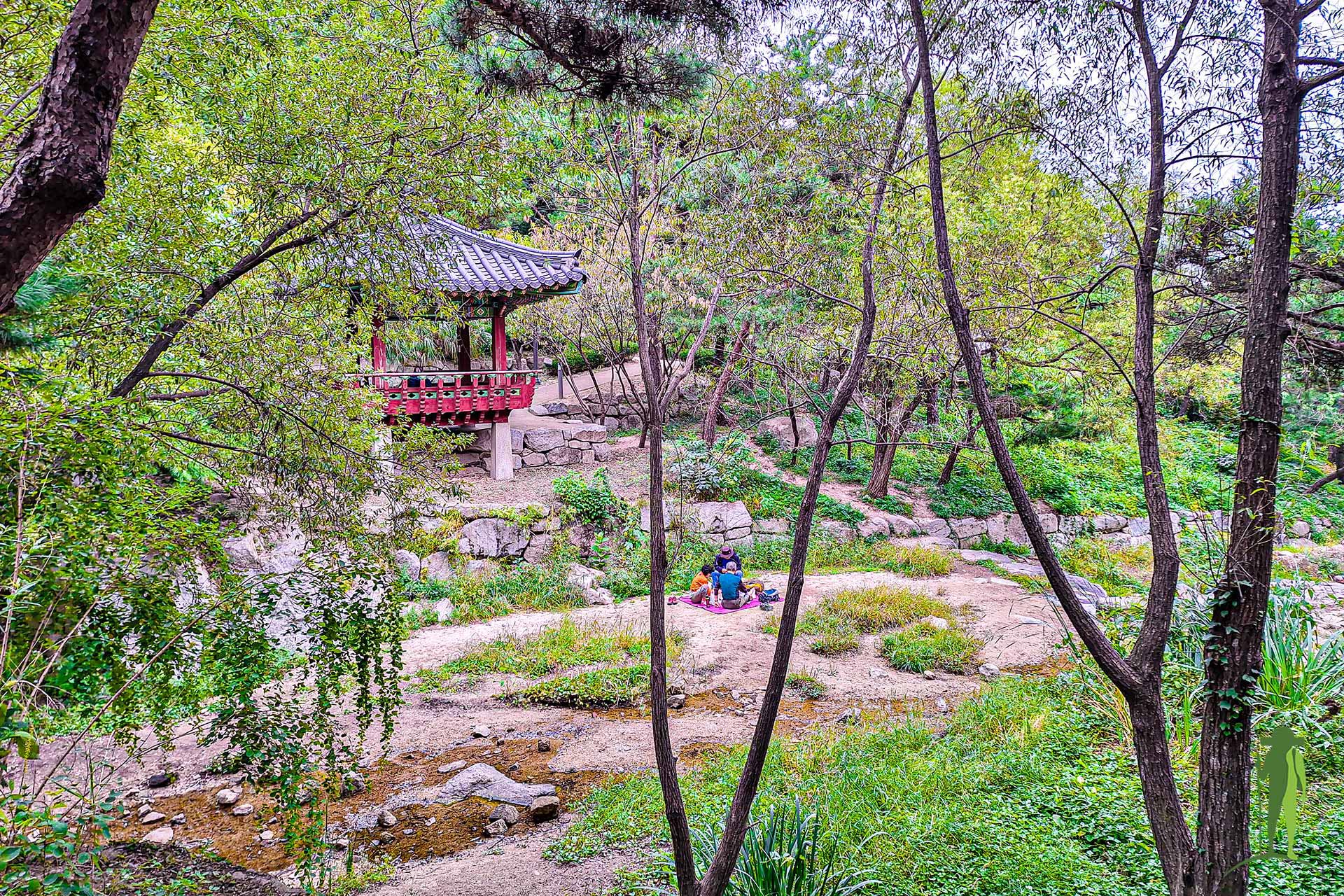
Locals enjoying a Sunday picnic (and perhaps a bottle of makgeolli) in Suseongdong Valley
What About the Food?
As far as I can recall, the first Korean food that I tasted was the bibimbap on a Korean Airlines flight. Bibimbap is a staple Korean dish wherein you mix rice and other ingredients together. You then season it with gochujang, drizzle sesame oil over it, and top it with fried egg. If you like spicy food, you simply add more red chili paste to suit your palate.
Korean barbecue was our go-to meal in Seoul. Thin cuts of meat, usually sirloin or short rib (and sometimes pork belly), are grilled in small quantities. You can eat the meat on its own or wrap it in lettuce/perilla leaf if you’d like to cut down on your rice intake. The banchan, various side dishes that come with the main meal, were an adventure in itself.
When we were not grilling meat, we tried different kinds of seafood-based dishes — braised cutlass fish, grilled plaice, squid pancake, and fish cake soup with a variety of shells added in. We also had the popular Korean fried chicken, which didn’t disappoint. Among the snacks that we tried, bungeoppang (fish-shaped pastry) was the one that we enjoyed. We found the steamed buns a bit sweet and the fried donuts a bit greasy.
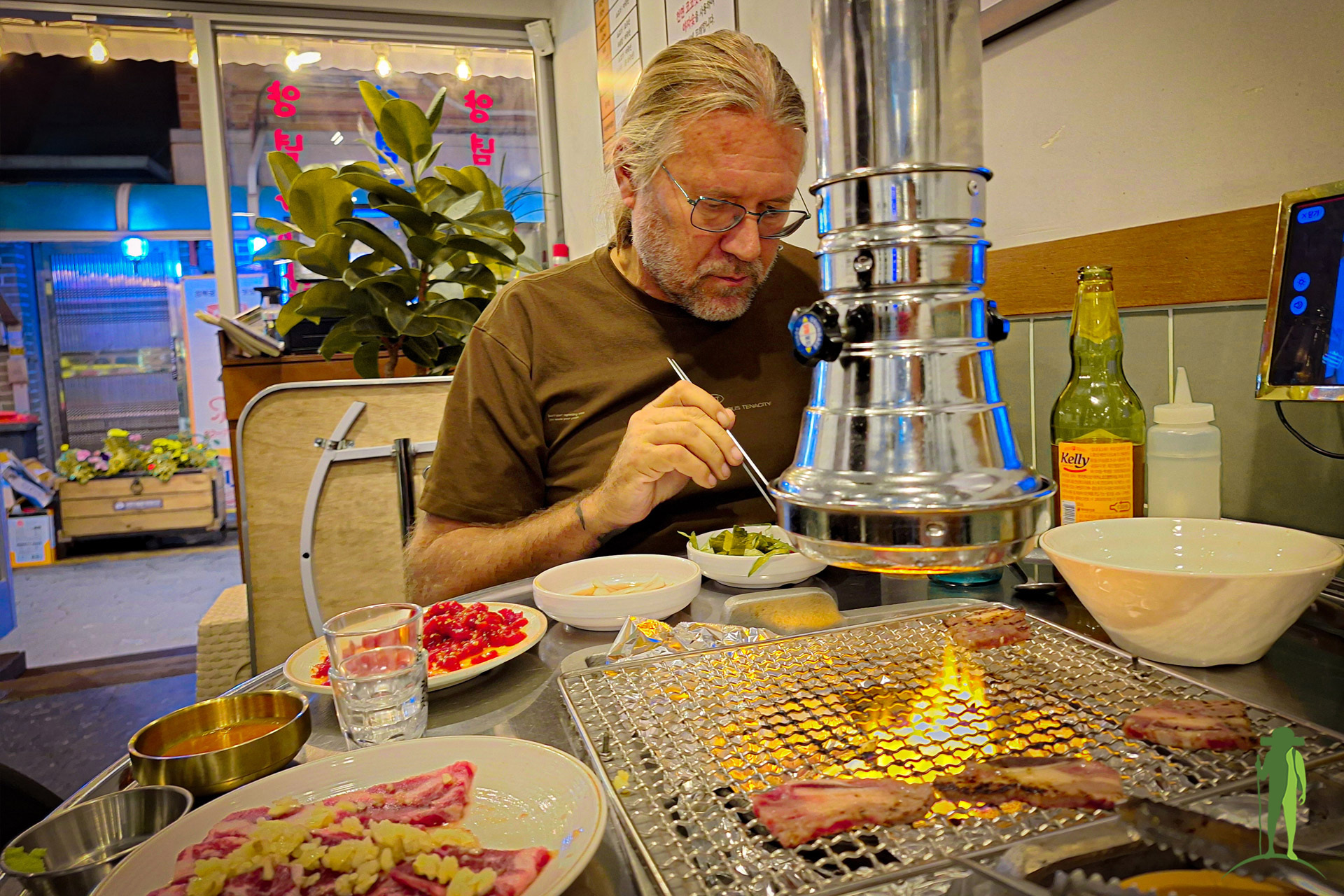
Sten and I normally order one dish to share, especially if it’s a big portion, because we’re not big eaters. We received a few strange looks when we tried to do the same thing in Seoul. The dishes are usually for sharing, and if individual portions are available, each person needs to order at least one item. In some establishments like bibimbap eateries, they automatically charge a per-head rate to each patron. This is kind of understandable since they need to cover the cost of the side dishes that they serve on each table.
Check your preconceptions at the door
Soondae, or Korean blood sausage, is made by mixing pork blood with cellophane noodles and glutinous rice. It tastes very different from the blood pudding we are accustomed to in other parts of the world.
Bibim-naengmyeon, or spicy Korean buckwheat noodles, is a sweet-and-spicy cold noodle dish. I forgot once again that buckwheat noodles are usually served cold in Korea.
While we felt the heat of the spice in both dishes, we missed the heat in the noodles. The result of this culinary adventure was a texturally redundant experience that had us chewing through our meal. The portions were a bit big, so we couldn’t finish everything. This was our least favorite combination and, I would say, the only unsuccessful dinner we had in Seoul.
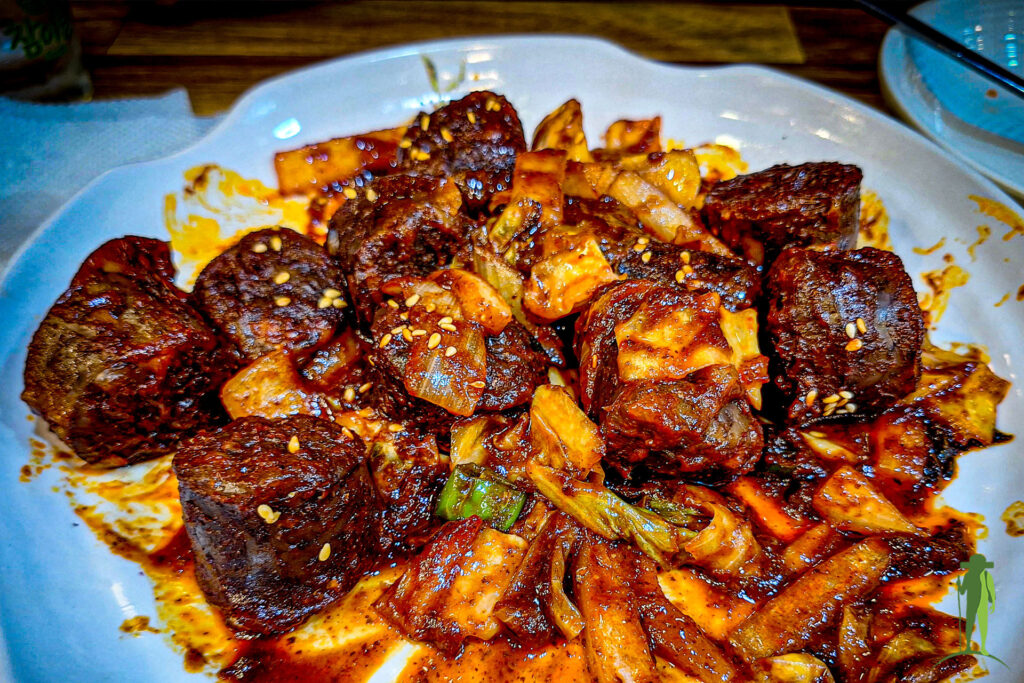
Left: Korean blood sausage (soondae)
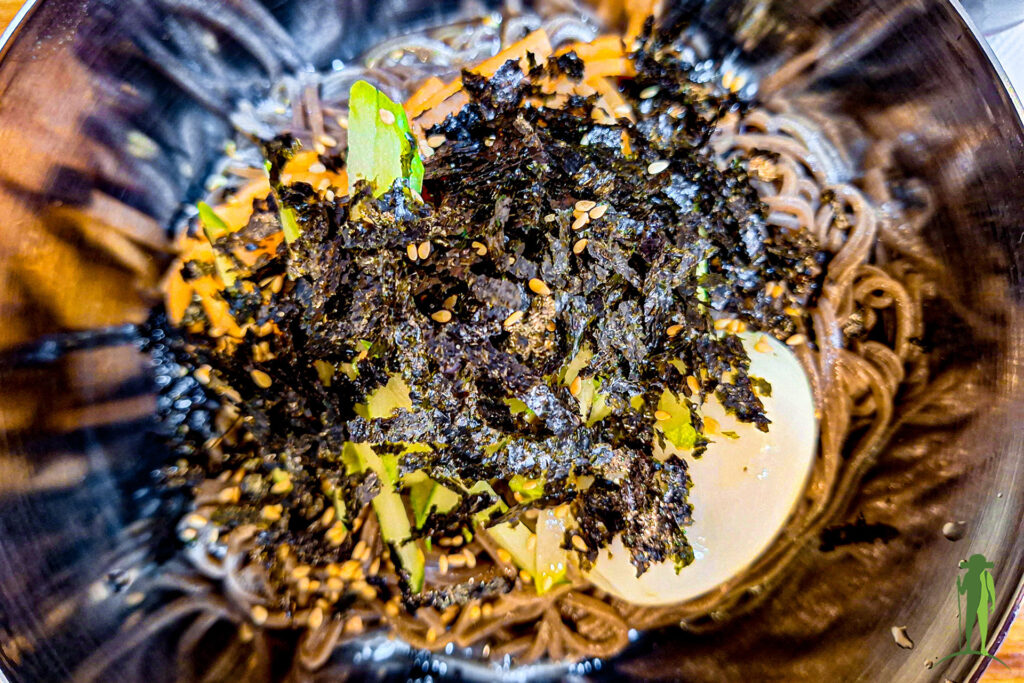
Right: Spicy Korean buckwheat noodles (bibim-naengmyeon)
Is Seoul Worth a Visit?
It depends on what you’d like to do, but I say go for it if you have the time. We only spent 4 full days in Seoul, which was not enough to see what the capital and the rest of the country had to offer. It is certainly a comfortable and safe place to visit with its efficient transportation system and modern conveniences. A lot of people in Seoul speak English and those who are unable use a translator app to communicate.
Check out our list of things to do in Seoul for some ideas if you plan to make the trip.
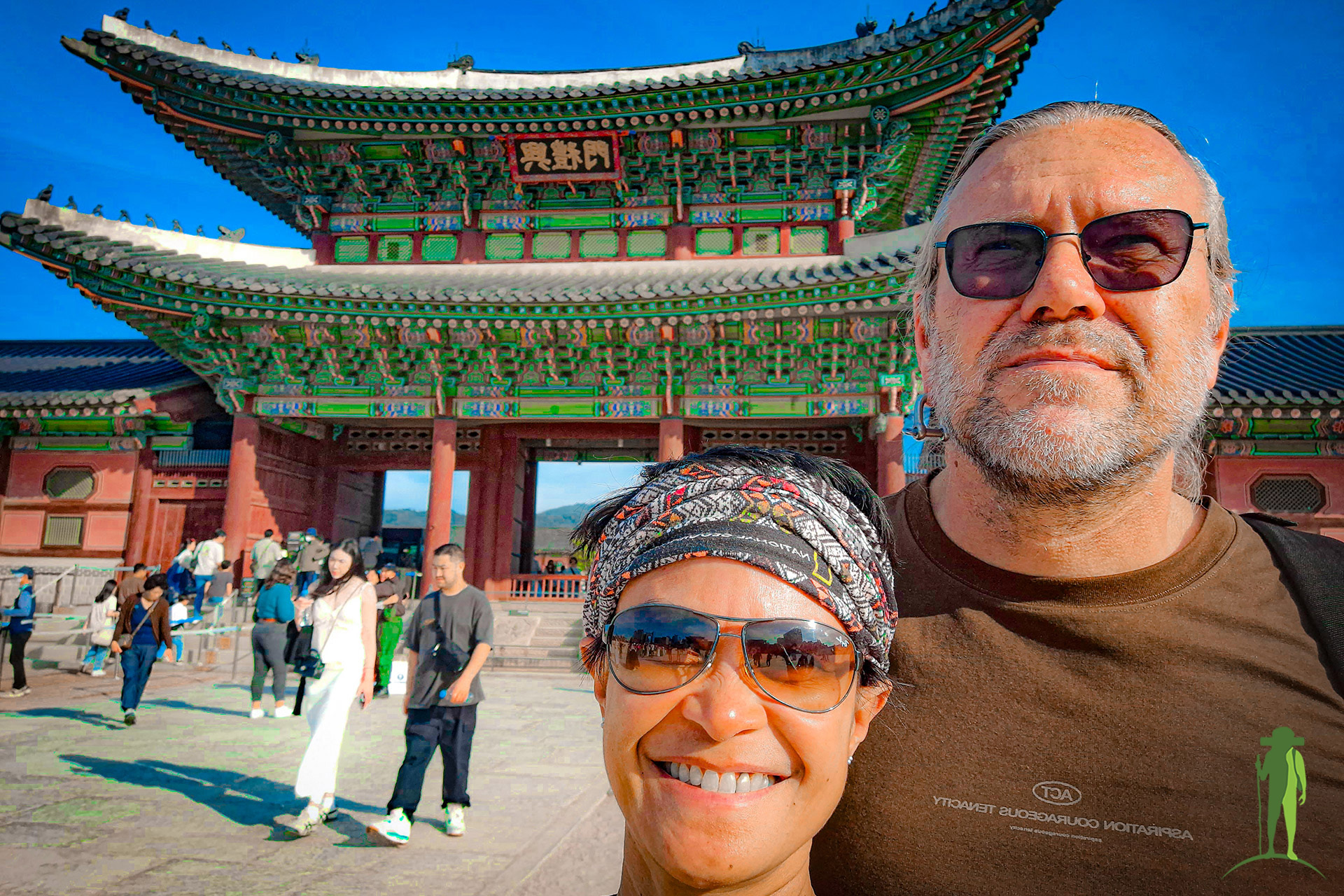
More From Our Blog
Kalinga Batok: Journeying into the Heart of the Highlands
As what has become customary for us, Sten and I came up with a vague plan of visiting the mountainous northern region of the Philippines, where rice fields and vegetable crops cover giant staircases that lead up to the skies. After completing a cursory research, we set out in our loaner A/T SUV and left the busy streets of Manila. A few missed turns later, we found ourselves cruising along the expressway. I listened to my brother’s collection of music from the unfortunate 80’s while Sten snoozed in the passenger seat.
The Double-Edged Smartphone
We were born in the advent of personal computers. As Generation X-ers, we are more familiar with Atari, floppy disks, and DVD players than emojis, reels, and hashtags. Our fondest childhood memories include walking over to the neighbor’s house next door, hanging out with friends at the local grocer, and playing outside. Rain, shine, or snow, it didn’t matter to us because we loved the outdoors. When we stayed in, by choice or otherwise, we built a fort, played board games, and watched television. Most activities were communal events back then.
Choosing the Right Tour Operator
With our love for travel and having worked for various tour companies in the last 15+ years, we have experienced the travel industry from the perspective of a tourist as well as from that of a tour operator. Over the years, we have developed our own guidelines when it comes to choosing the right tour company. We understand that we may not follow the same standards as that of others. After all, each one of us is different.
